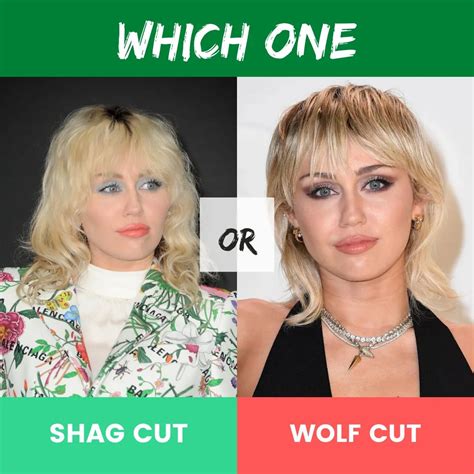With their captivating layers and effortlessly cool vibes, the wolf cut and shag haircuts have emerged as two of the most sought-after styles for those seeking a daring and distinct look. But what sets these edgy hairstyles apart, and which one is right for you? Join us as we delve into the nuances of the wolf cut vs. shag debate, exploring their similarities, differences, and suitability for various hair types and face shapes.

Origins and Evolution
Both the wolf cut and the shag have deep roots in the 1970s, when layering techniques and shaggy, carefree styles were all the rage. The wolf cut is said to have originated among rock musicians and evolved from the mullet, while the shag emerged as a more versatile style for women and men.
Defining Characteristics
While superficially similar, the wolf cut and shag possess distinct characteristics that set them apart.
Wolf Cut
- Shaggy, layered construction with shorter layers at the crown and longer, feathered layers around the face
- Disconnected shape that creates a “wolf-like” mane, with the back and sides often left long and untamed
- Fringe or bangs that frame the face, adding a touch of edginess
Shag
- Multi-layered structure with uniform layers throughout the hair
- Textured and voluminous appearance, achieved through layering, feathering, and styling
- Versatility that allows for various interpretations, from soft and feminine to bold and rock’n’roll
Similarities and Differences
Despite their unique features, the wolf cut and shag share some common ground:
Similarities:
- Layered construction that adds volume and movement
- Edgy and effortlessly cool aesthetics
- Versatile styles that can be adapted to suit different hair types and face shapes
Differences:
- Shape: The wolf cut has a disconnected shape, while the shag is more uniform throughout.
- Length: The wolf cut typically has shorter layers at the crown and longer layers at the back, while the shag features more consistent layers.
- Texture: The wolf cut emphasizes shaggy, feathered layers, while the shag can achieve both textured and smooth effects.
Wolf Cut vs. Shag: Which One is Right for You?
The choice between the wolf cut and shag ultimately depends on your personal style, hair type, and face shape.
Wolf Cut:
- Ideal for thick, wavy, or curly hair
- Suitable for oval and round face shapes
- Provides volume, texture, and an edgy, rock-inspired look
Shag:
- Ideal for fine, straight, or thin hair
- Suitable for all face shapes
- Creates movement, texture, and a versatile style that can range from soft to dramatic
Styling Tips and Tricks
To achieve the perfect wolf cut or shag, consider the following styling tips:
- Wolf Cut: Use a blow dryer and round brush to create volume at the roots and emphasize the disconnected shape. Finish with a pomade or styling clay for hold.
- Shag: Layer your styling products, starting with a volumizing mousse at the roots and finishing with a texturizing spray or dry shampoo for added lift and texture.
Common Mistakes to Avoid
- Over-layering: Too many layers can weigh down your hair and create a frizzy or unkempt look.
- Wrong products: Using the wrong hair products can dull your style or make your hair look greasy. Choose products specifically designed for layered hairstyles.
- Lack of maintenance: Both the wolf cut and shag require regular trims and touch-ups to maintain their shape and texture.
Conclusion
Whether you prefer the shaggy, disconnected wildness of the wolf cut or the versatile, textured elegance of the shag, these edgy hairstyles offer endless possibilities for self-expression and style experimentation. Embrace their unique characteristics and styling tips to find the perfect fit for your individual beauty.
